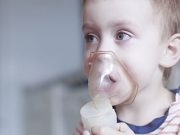Tag: Economic Status
Inflammation, Poverty Have Synergistic Effect on Mortality
Individuals with elevated C-reactive protein at 1.0 mg/dL and poverty had a greater risk for 15-year all-cause mortality
Negative Wealth Shock Linked to Accelerated Cognitive Decline
Associations with accelerated cognitive decline and increased dementia risk were seen for White participants, those younger than 65 years
Cardiac Rehabilitation Use Low in Distressed Communities
However, participation is universally tied to clinical benefits
Low Neighborhood Opportunity Tied to ED Visits for Asthma in Young Children
Neighborhoods with improved socioeconomic and educational opportunity have lower rates of asthma-related emergency visits
Low Income Decreases Odds of Cardiologist Involvement in Heart Failure Hospital Care
Hospitalized adults with household income <$35,000 are 11 percent less likely to receive cardiologist care
1999 to 2020 Saw Increase in HTN in Low-Income Middle-Aged Adults
Higher-income adults had increase in diabetes and obesity, but no change in hypertension
Neighborhood Disadvantage Tied to Higher Risk for Autism Diagnosis
Rates of autism diagnosis also higher for children of mothers from racial minority groups
Government Housing Assistance May Boost Some Cancer Screening
Findings seen for breast cancer and colorectal cancer screenings among adults with low income
Neighborhood Greenspace, Income Linked to White Matter Grade
Combination of lower neighborhood income and lower greenspace may be risk factor for worsening white matter grade on MRI
Socioeconomic Disparities ID’d in Thrombolysis, Thrombectomy Use
Stroke patients in most materially deprived group less likely to be treated with thrombolysis, thrombectomy














